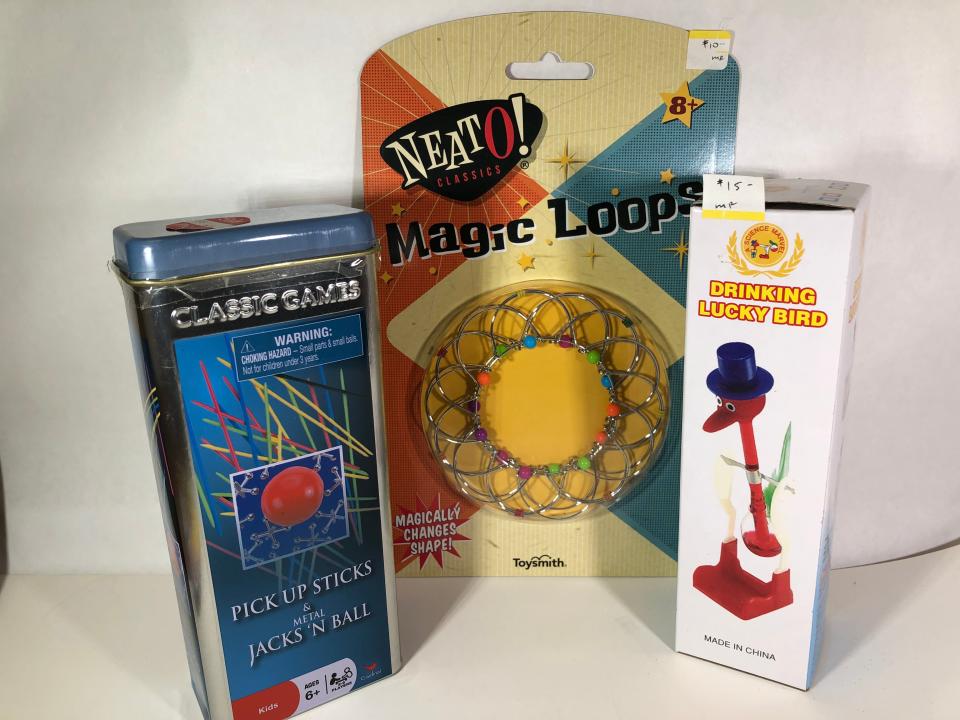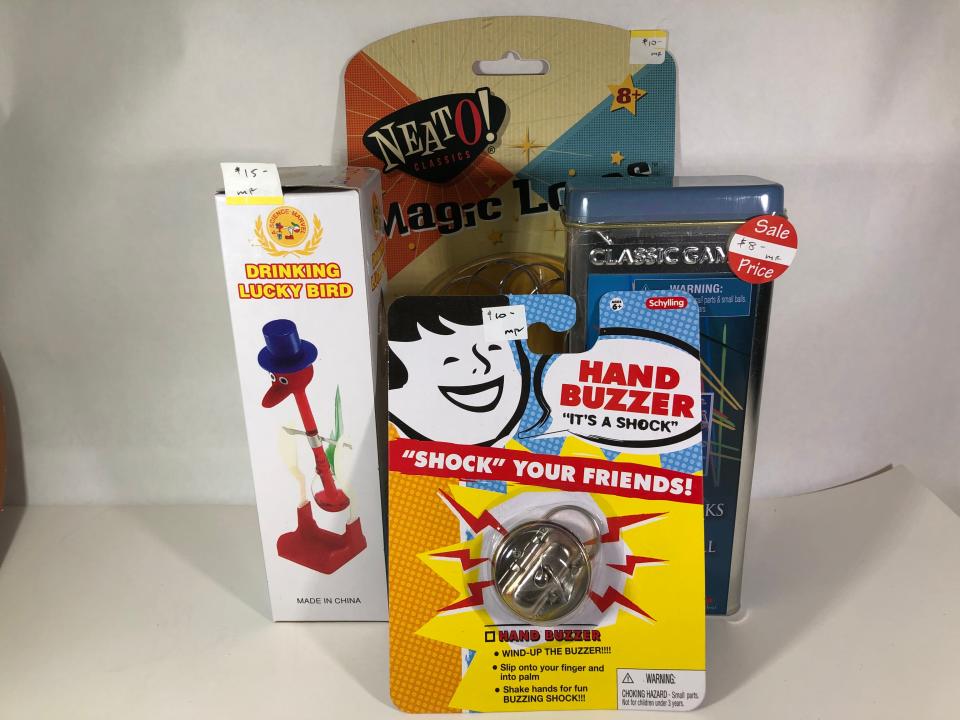Antiques: Why not real toys for Christmas?
Let's start today's column with a multiple choice question. How much time do your kids or grandkids spend on their computer? (a) Too much time; (b) Way too much time; (c) a ridiculous amount of time; (d) all of the above.
Well, maybe it's time to introduce them to the joys of mechanical toys, games and puzzles like the ones we grew up with. They're inexpensive, highly entertaining, and still available in galleries like ours ... plus they won't rot your kids' brains and put them in catatonic states for long periods of time. On the other hand, maybe that last isn't such a bad idea.
Anyway, let's not go there.
Not surprisingly, the recorded history of toys goes back at least 4,500 years, but probably extends to not long after Adam and Eve. Blocks, dolls and yo-yos were likely among the first manufactured toys, but even artly presented sticks and stones were used to distract the youngsters.

Dolls from Egypt, Greece, and Rome are among the earliest known, and Greece is also where the first known mechanical puzzle appeared in the 3rd century BC. With the beginning of the Enlightenment around 1685, kids began to be viewed not just as breadwinners-in-training but rather as individuals worthy of education and betterment. Thus, the making and use of toys became more widespread.
If you were a child in the New World during the 19th century, you likely had all sorts of toys to play with. Western thinking prioritized intellectual development at a young age, and the Industrial Revolution allowed for new types of complex manufacturing. Toys such as the kaleidoscope first appeared in Europe around 1817 and was an instant sensation.
By the year 1900, Franz Kolb's invention of plasticine was already 20 years old and being used in an increasingly wide variety of products, especially toys. Puzzles and tangrams could also be found in many family households. Kids now had something else to look forward to besides picking up endless mounds of goat poop.

And as the last century got underway, the toy industry exploded with new ideas and players. The first licensed product was Peter Rabbit, a Beatrix Potter creation that debuted in 1903. We all know what happened from there. Other iconic toys to come out of the era include Silly Putty, Slinky and Play Doh. New materials such as fiberglass and nylon widely used during WWII became familiar to civilians, and were quickly adopted for use in toys. Model cars also came into their own with well-known makers such as Dinky in England and Hot Wheels in the USA. It was a great time to be a kid.
As for today, well, entertainment for kids has turned electronic with highly debatable results. Nonetheless, there are still some great toys out there with nary a bit, byte, or circuit. Original Slinkies and Bobbing Birds can still be had for the price of a fancy coffee, and puzzles of every sort are widely available for the taking. Then there are Legos, magic rocks, pick-up sticks, plastic dinosaurs, toy trains, and more.
So, do yourself and your kids a favor this holiday season. Walk past the piles of electric whatnots and pick up a few real toys. It'll be good for you and better for them.
Mike Rivkin and his wife, Linda, are longtime residents of Rancho Mirage. For many years, he was an award-winning catalogue publisher and has authored seven books, along with countless articles. Now, he's the owner of Antique Galleries of Palm Springs. His antiques column appears Sundays in The Desert Sun. Want to send Mike a question about antiques? Drop him a line at info@silverfishpress.com
This article originally appeared on Palm Springs Desert Sun: Antiques: Why not real toys for Christmas?

